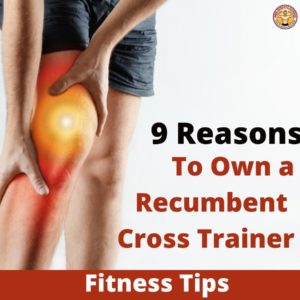Think about your last workout for a minute. I’d be willing to be that at least 75% of your workout focused on linear movements, movements where you move forward and backward.
Even as you think about your day-to-day activities like walking, taking the stairs, sitting at your desk, the majority of the movements are all linear.
It’s essential to focus on strengthening the muscles that we use in these linear motions. Still, it’s also crucial to include lateral movements, or side-to-side movement, in our exercise routines.
We’re going to explain why lateral movements are so beneficial, but first, let’s talk more about what lateral movements are.
What are Lateral Movement Exercises?
We lead with our eyes first, so focusing on linear movements is almost something that we overlook.
Unlike our ancestors, who were constantly moving their bodies in all directions searching for food, the age we live in doesn’t require the same variety of movement.
Lateral movement exercises aim to fill in the gap.
There are two types of lateral activities, abduction, which is where you move your limb away from the body, and its counterpart, adduction when you move your limb back closer to your body.
You may have seen a contraption at the gym where you sit and push your thighs away or back in; that is just one type of lateral exercise.
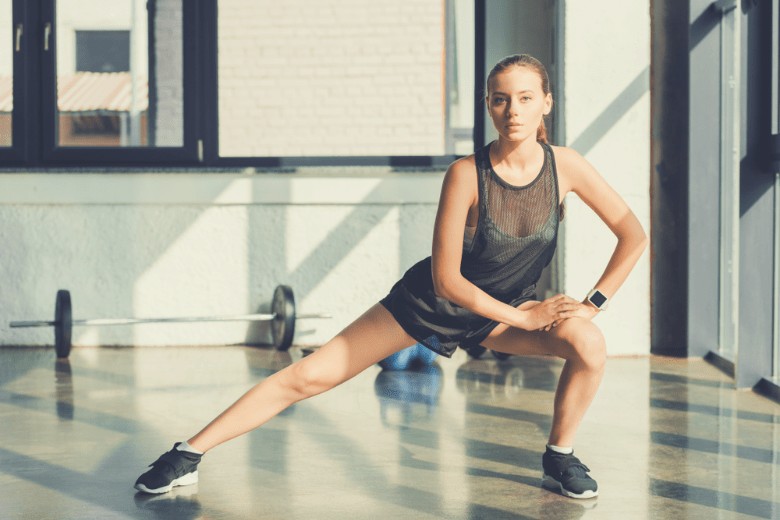
Who Should Do Lateral Movement Exercises?
Regardless of age or fitness level, anyone who can safely move side to side should incorporate these exercises into their workout routine.
This is especially important considering the lack of practice we get in these movements during our typical day.
This type of movement is particularly important for runners. Performing these types of lateral movements is also really beneficial if one of your priorities is to strengthen your glutes.
Anyone who has a love of playing sports like tennis, football, and basketball, whether recreationally or professionally, should also incorporate lateral exercises as these types of sports require abrupt changes in direction.
Types of Lateral Movement Exercises
Lateral exercises aren’t limited to side lunges, although side lunges are a great example.
There are a ton of options that allow you to add a little spice to your workout, including plyometric jumps, and star jumps.
Star Jumps
Star jumps are similar to jumping jacks, another type of lateral exercise, but require you to lift off the ground, move both legs to the side, and land with your feet together.
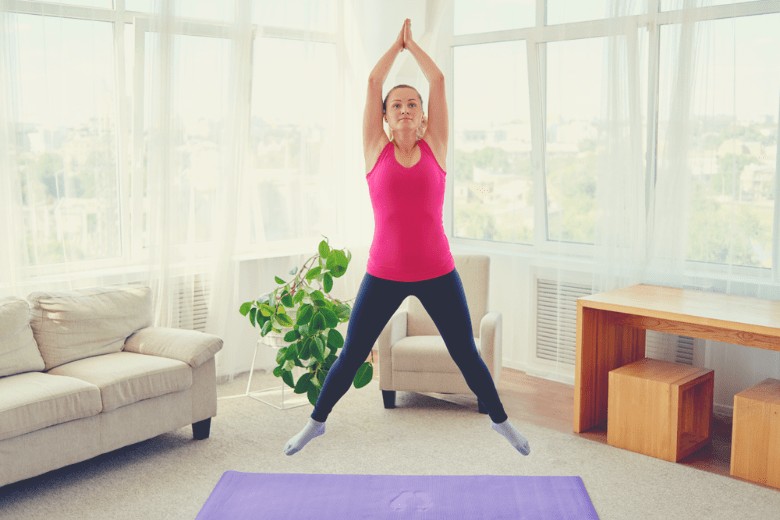
Side Shuffles
Side shuffles and grapevines, like you may remember from grade school or Jane Fonda videos, are another excellent option for lateral exercise.
The benefit of side shuffles is that you can make them lower-impact by stepping side to side instead of hopping.
You can keep the impact low while increasing intensity by squatting down lower.
Lateral Bear Crawls
Lateral bear crawls are another popular lateral activity that helps to strengthen more than just your legs; it also requires a significant amount of core work and a bit of shoulder activation.
Bunny Hops
Hopping like a bunny isn’t reserved for the kids. This simple jump from side to side trains your body to stabilize as you hit the ground.
They’re a simple but incredibly effective lateral exercise that makes you feel like a kid.
Lateral Band Walks
Lateral band walks require the use of a resistance band. Resistance bands are very cost-effective and can be used for almost every type of exercise.
Lateral band walks are very low impact and allow you to work those stabilizing muscles without having to incorporate jumps.
Simply place the band around your legs and step sideways for a few steps and then move back in the other direction.
Lateral Raises
It’s essential to keep in mind that lateral movements aren’t limited to your lower body. To perform a lateral raise, hold a weight in each hand and keep your feet hip-width apart.
Then, with your back straight, core braced, and elbows soft, raise your arms to the side, stopping at shoulder height, and then bring your arms back down.
While these movements can be incorporated into many different sections of your workout, it’s especially important to include lateral movements in your warm-up.
This prepares your body for what’s to come and activates the muscles that will support your workout activities.
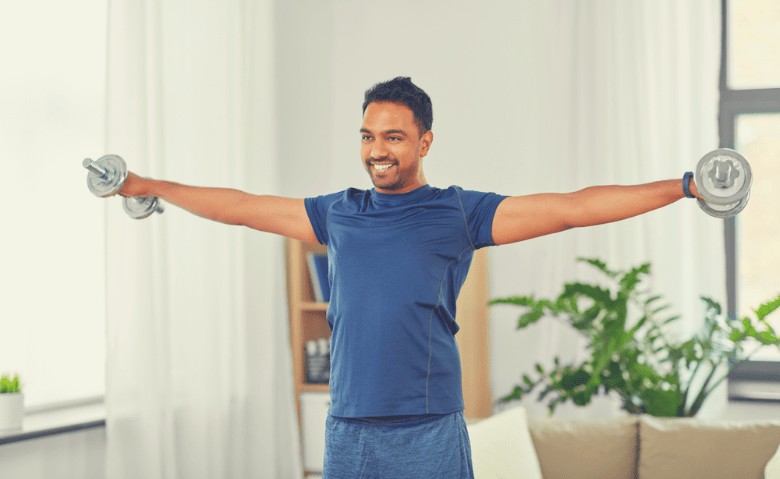
Tips on Safely Using Lateral Movement Exercises
Slow and Steady Wins the Race
As with all exercise, form is paramount, and the best way to ensure you’re using the proper form is to go slow.
Start by incorporating lower impact movements once or twice a week. As you master the movements with one foot on the ground, you can then incorporate higher impact movements like jumps.
For example, you could start with modified jumping jacks that move one side at a time, then progress to jumping jacks and finally star jumps.
Focus on Range of Motion
If you’re entirely new to lateral movements, start by focusing on mobility and range of motion first.
As you expand your range of motion, then you can progressively increase your repetitions.
That may mean that if you’re starting with speed skaters, you start with a smaller leap to each side and eventually use your power to leap farther.
Place it at the Beginning of Your Workout
As you grow familiar with the movements, you can move them around to any part of your workout; however, if you’re following the tips above, you’ll be focused on slowly building up these muscles and increasing your mobility.
If you’re in the middle of the workout, your muscles may already be fatigued, which can inhibit your ability to focus on the movements instead of speed or power.
Of course, all of the standard workout safety rules like proper breathing technique also apply.
Now that you’re aware of what lateral exercises are and how to execute them safely, we’re going to dive into how lateral movements can help prevent injury, improve your balance, coordination, and strength, all while providing variety and how they’re effective for rehabilitation.
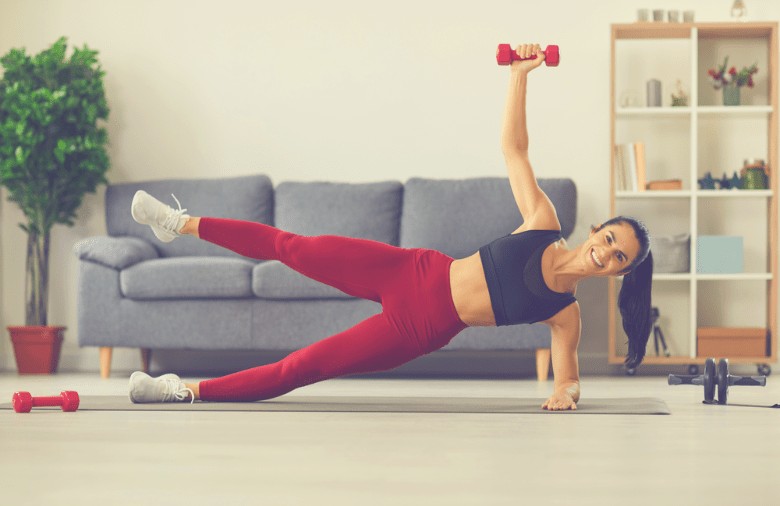
Benefits of Lateral Movement Exercises
#1. Lateral Exercises Can Help Prevent Injury
When you use your larger muscles during a workout, those larger muscles are supported by the smaller stabilization muscles.
These stabilization muscles help to support the muscles and tendons around your joints, particularly your hips, knees, and feet.
If you’re constantly strengthening your larger muscles like your quadriceps, hamstrings, and calves, without working the smaller muscles, you’ll create an imbalance that can contribute to injury and joint pain.
Building these muscles also helps to increase your agility and reflexes, which can help you recover quickly from falls and accidents.
#2. They Can Also Be Effective for Rehabilitation
Lateral movements, especially lateral lunges, are one of the best exercises to increase the strength in the muscles that support your knees, which in turn allows this type of movement to be incredibly helpful in treating ligament injuries in your knees.
Other laterally based exercises like bunny hops, also known as lateral hops, and lateral resistance band walks are also commonly used in ACL rehabilitation exercises.
The ACL is the ligament that connects the thighbone to your shinbone, and while a tear is typically seen in athletes, it can also occur due to an impact injury.
The utilization of progressively challenging lateral movements can help to build back activation of the ligament safely.
#3. Lateral Movements Help with Balance and Coordination
You don’t just use your large muscle to stay balanced. The smaller muscles also contribute to your balance, flexibility, and coordination.
Think about standing on one leg; for example, you have to shift your weight without bowing the knee on your support leg out.
You also have to tighten your core, including the oblique muscles, spread out your toes and balance your weight between the ball and heel of your foot.
The stabilization muscles that you work while you perform speed skaters, jumping from one foot to another, strengthen these muscles, which results in improved balance.
Aside from the muscles that you’re working, many of the lateral movement exercises train your body into being light on your feet.
Especially the lateral movements that include plyometrics, aka jumping. For example, speed skaters are an excellent lateral exercise where you jump from one foot to another, bringing the other foot behind you.
This movement forces you to practice balancing on one foot and increases your agility, reflexes, and coordination as you quickly jump from one foot to the other.
It doesn’t hurt that speed skaters are an excellent addition to any cardio workout as it increases your heart rate drastically.
#4. It Boosts Your Strength Training Game
Enough about stabilization for a moment. Working these smaller muscles also allows your larger muscles to work more effectively.
If you add in a few lateral movement exercises into your warm-up and beginning on your workout, you’ll find that your larger muscles like your hamstrings, the muscles in the back of your legs, glutes, and quads will be better prepared to do the heavy lifting and you’ll see the results of that heavy lifting sooner.
#5. Variety is the Spice of Life
One of the most challenging parts of creating a consistent workout routine is figuring out how to stay motivated.
It’s easy to get bored going through the same movements time after time. This is especially true of linear movements; every day we walk forward, we look straight ahead at a computer screen and look down at our phones.
I don’t think I’ve ever seen a group of friends walking sideways down the sidewalk. The same is true for the gym; we run forwards on a treadmill.
Occasionally you’ll find a brave soul walking backward on the elliptical, but often there are rows of lifters looking straight ahead in the mirror as they lift up and down or lunge forwards and backward.
By incorporating side-to-side movements, you’re adding something different to the routine, which can keep your workouts interesting.
However, that’s not the only variety we’re speaking of. Changes in your body occur when you push and challenge your body safely.
Lateral movement exercises are easy to modify for beginners.
Still, you can also quite easily make the movements progressively more challenging by increasing the impact, adding resistance bands, or using other equipment like a Bosu ball.
Let’s look at the jumping jack again.
We already took a look at how you can decrease the impact by moving one side at a time and then progressing through a jumping jack to a star jump, but you can also take the modified jumping jack and make it more difficult by placing a resistance band around your thighs or calves.
Alternatively, you can alternate jumping from foot to foot in a side-to-side squat if you have a Bosu ball. The options are endless.
Best Lateral Movement Exercise Equipment
| Helix Lateral Trainer | Brrrn Board | SCOOP Lateral Trainer |
 |
 |
 |
| The Helix Lateral Trainer H1000 allows you to achieve target heart rates faster and activate more muscles in less time than ellipticals or treadmills. |
The Brrrn Board is a unique workout experience that’s portable and does not take up a lot of space in your home. | The SCOOP Lateral Trainer is an under-desk workout machine that you can use while watching TV or even working! |
 |
 |
 |
One Last Note
I can’t emphasize the importance of adding in lateral work to your training enough, but there is one caveat, you won’t see any of the benefits if you’re not safe.
If you’re recovering from an injury, have extenuating circumstances, or any physical limitations, it’s always best to seek advice from your doctor before adding any new exercises to your routine.
When used correctly and safely, incorporating lateral movement exercises into your workout can help strengthen your larger and smaller muscles, preventing injury, improving your balance and agility, and help to mix up your workouts. Ready to get started? Check out some of these fantastic lateral exercises.


